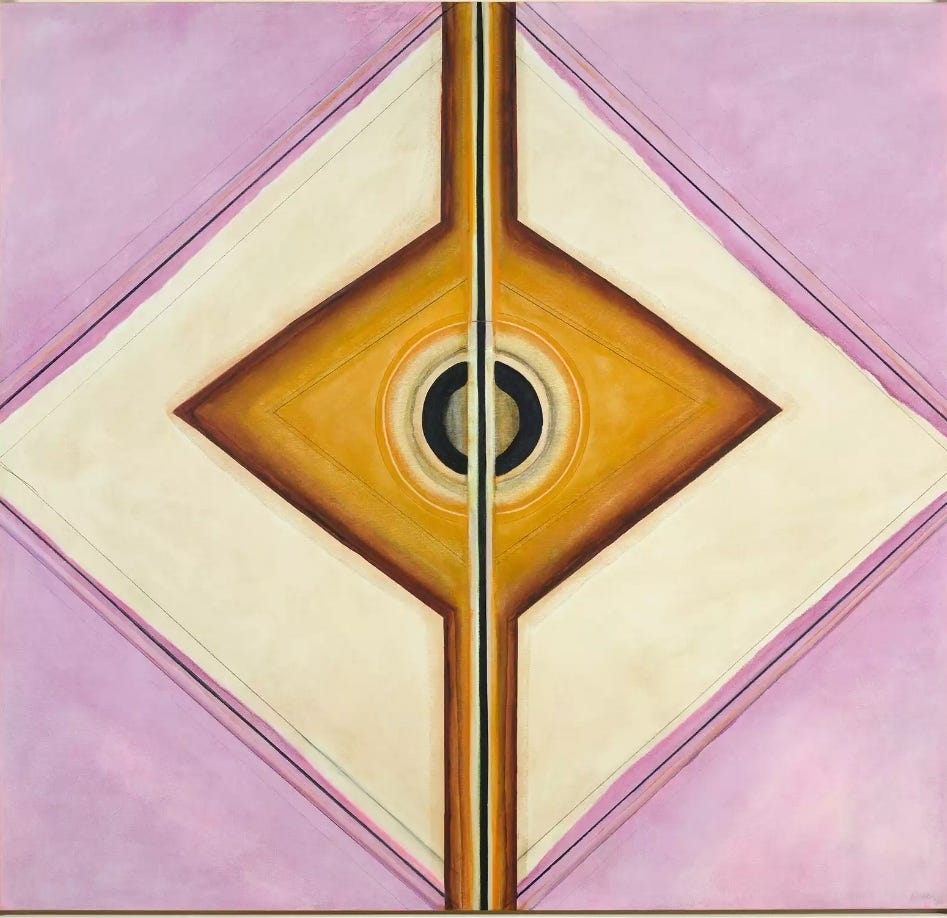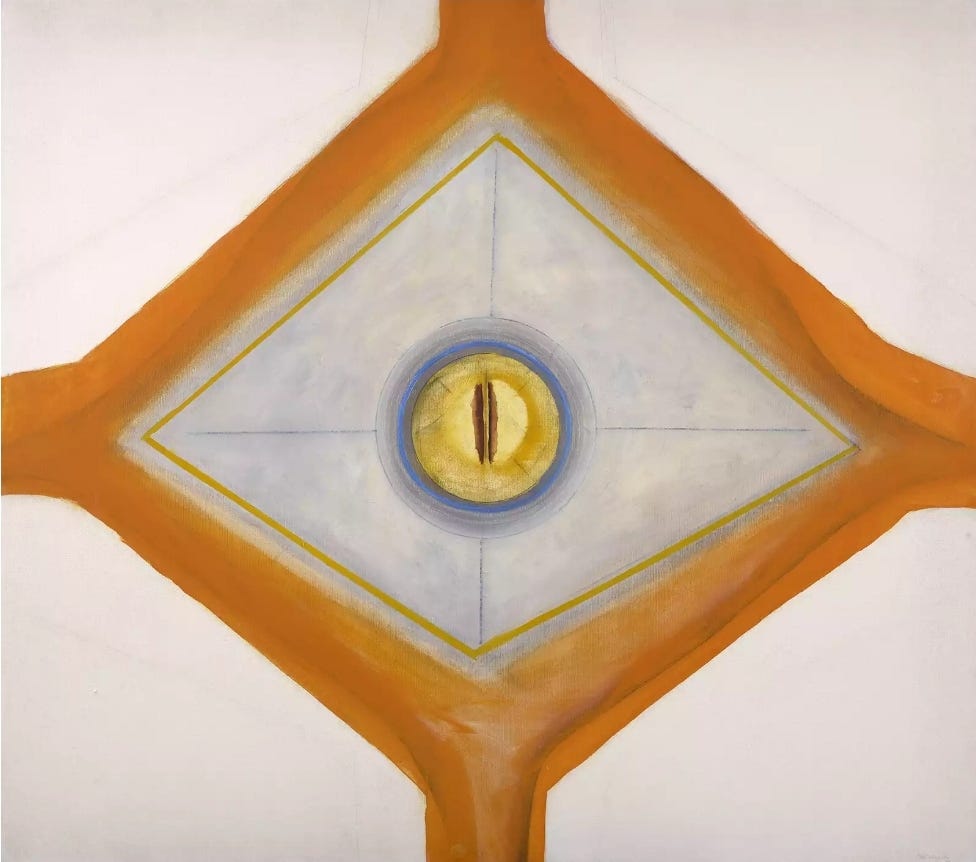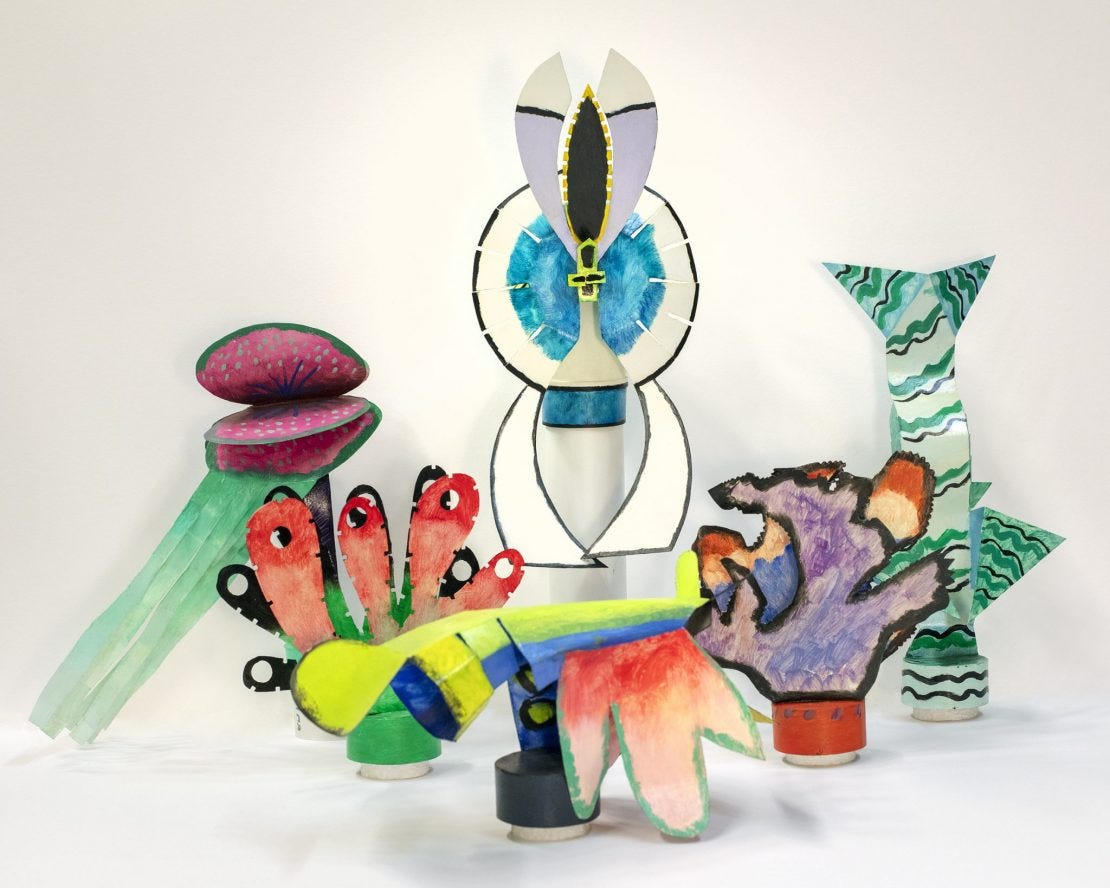Ida Kohlmeyer (1912–1997) was a pioneering modernist painter and sculptor from New Orleans whose work bridged the gap between Abstract Expressionism and a personal, symbolic visual language. Influenced by Joan Miró and Mark Rothko, Kohlmeyer forged a unique artistic style that became a hallmark of contemporary Southern art.
Ida Kohlmeyer stands as a central figure in modernist abstraction in the American South, particularly in New Orleans. Born in 1912 to Polish Jewish immigrant parents, she defied societal expectations to pursue an art career in an era when women artists, especially in the South, faced significant challenges. Over the course of her career, Kohlmeyer moved from early figurative painting to a highly individualized abstract style, incorporating bright colors, geometric compositions, and an idiosyncratic visual language. Her works, though deeply personal, contributed to the broader discourse of abstraction in the 20th century.
Ida Kohlmeyer was born in New Orleans in 1912, the daughter of Polish Jewish immigrants. Raised in a traditional household, she was not initially encouraged to pursue art. She attended Tulane University, earning a degree in English literature in 1933. It was only after marrying Hugh Kohlmeyer and raising her children that she began to study art formally.
In the late 1940s, Kohlmeyer enrolled in art classes at Newcomb College, the women's coordinate college of Tulane University. Newcomb had a long tradition of fostering female artists, though its primary focus had historically been decorative arts. However, by the time Kohlmeyer attended, modernist influences were gaining traction in the curriculum. Her studies there set the foundation for her later artistic explorations.

A turning point in Kohlmeyer's career came in the early 1950s when she attended the School of the Art Institute of Chicago’s summer program. She was particularly drawn to Abstract Expressionism, and this interest deepened when she studied under Hans Hofmann in Provincetown, Massachusetts, in 1956. Hofmann, known for his theories on color and form, profoundly influenced her approach to abstraction.
Kohlmeyer also encountered the works of Joan Miró and Mark Rothko, both of whom left a lasting impression on her style. Miró’s use of playful, symbolic forms and Rothko’s emphasis on emotive color fields resonated with her, leading to a transition from gestural abstraction to a more structured, symbolic visual vocabulary. However, Kohlmeyer’s work remained distinct from her influences, as she developed a personal lexicon of abstract symbols and shapes that would define her mature style.

By the late 1960s, Kohlmeyer had moved beyond pure Abstract Expressionism and began developing a unique artistic language. Her works from this period are characterized by grid-like compositions filled with colorful, glyph-like symbols that resemble a personal alphabet. These symbols, often arranged in vibrant, rhythmic sequences, became a hallmark of her work.
According to Elizabeth Chubbuck Weinstein in Ida Kohlmeyer: Standing Among Giants, Kohlmeyer’s symbols were not intended to be deciphered in a literal sense but rather to evoke emotion and meaning through their visual relationships. Her use of color was similarly significant, with bright hues lending her compositions a sense of playfulness and energy.

This shift in her work aligned Kohlmeyer with a broader trend in American art, where artists sought to create their own visual systems as a means of self-expression. Unlike the hard-edged formalism of some contemporary abstractionists, Kohlmeyer’s approach remained intuitive and organic.

Although primarily known as a painter, Kohlmeyer also experimented with sculpture in the 1970s and 1980s. Her three-dimensional works retained the symbolic language of her paintings but took on new forms in space. Sculptures like Sculpture, welded aluminum and marine paint, translated her painted glyphs into physical structures, creating a dialogue between form and color.
Throughout her later career, Kohlmeyer received increasing recognition. She exhibited widely, and her work was acquired by major institutions, including the New Orleans Museum of Art, the Whitney Museum of American Art, and the High Museum of Art.

Her public commissions, such as Aquatic Colonnade (1989) in New Orleans, further cemented her influence in contemporary Southern art. Her ability to merge abstract expression with regional identity made her a defining figure in modernist art in the South.
Kohlmeyer’s impact on the contemporary Southern art scene cannot be overstated. As one of the few women artists from the South to gain national recognition in the mid-20th century, she paved the way for future generations of artists. Her work continues to be studied and exhibited, highlighting her contributions to modernist abstraction.

Exhibitions such as the Berry Campbell Gallery’s Ida Kohlmeyer: Cloistered (1968-1969) have helped contextualize her work within the broader movement of American abstraction. Additionally, her inclusion in Central to Their Lives: Southern Women Artists in the Johnson Collection underscores her importance in the history of women’s contributions to art.
Kohlmeyer’s unique fusion of personal symbolism and abstraction remains influential today, with contemporary artists drawing inspiration from her bold use of color and form. Her legacy is preserved in museum collections and retrospectives that continue to celebrate her contributions to modern art.
Ida Kohlmeyer’s career represents a remarkable journey of artistic discovery and innovation. From her early studies in New Orleans to her development of a distinctive abstract language, she remained committed to self-expression and experimentation. While influenced by major figures such as Joan Miró and Mark Rothko, she ultimately forged a path that was uniquely her own.
Through her paintings and sculptures, Kohlmeyer expanded the possibilities of modernist abstraction while remaining deeply connected to her Southern roots. Her work challenges viewers to engage with visual symbols on an intuitive level, making her one of the most compelling artists of her time.
Her contributions to contemporary art, especially within the Southern United States, continue to resonate, solidifying her place as a pioneering modernist and a key figure in American abstraction.
References;
Berry Campbell Gallery. Ida Kohlmeyer: Cloistered (1968-1969). Exhibition Catalog. New York, 2019.
Johnson, Martha R. Central to Their Lives: Southern Women Artists in the Johnson Collection. Spartanburg: The Johnson Collection, 2018.
Weinstein, Elizabeth Chubbuck. Ida Kohlmeyer: Standing Among Giants. Baton Rouge: Louisiana Art & Science Museum, 2008.
Whitney Museum of American Art. Ida Kohlmeyer Collection. New York, NY.



